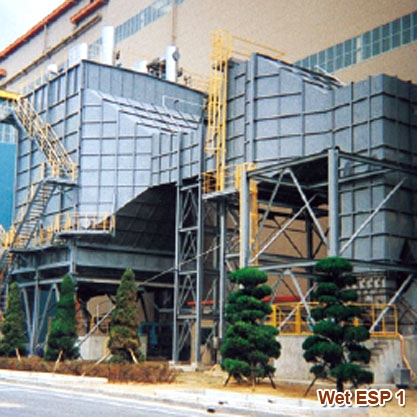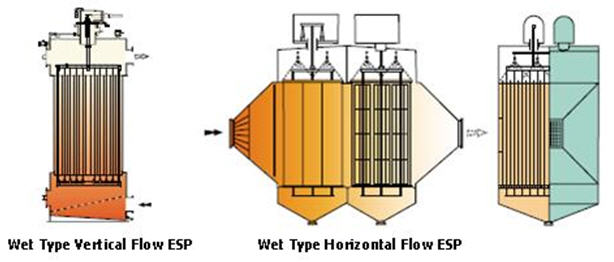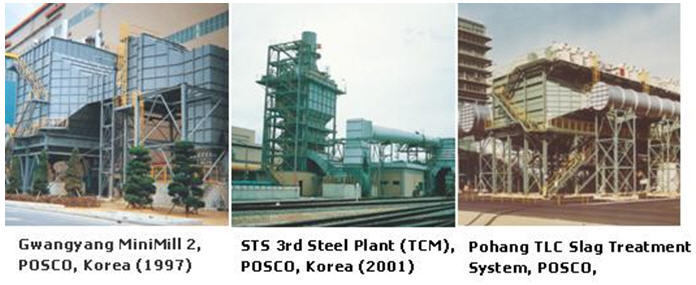Languages
Wet Type ESP

Wet type ESPs have many similarities with dry type units in terms of principle and design.
However, a basic difference is that the wet type is used in environments where the gas temperature is at or below dew point. Also, the rapping gear associated with dry units is replaced by an intermittent washdown system using water or other liquids to remove deposits from the collecting plate.
Wet type ESPs collect particulates that are sticky or suspended in the flue gas close to saturation>
temperature. It can also capture high resistance particulates and substances in a gaseous state. Two standard models of wet type ESP are available: Honey Comb Type (vertical flow) and G-Opzel Type (horizontal flow).

Advantages
- Low particulate emission
- Excellent collection efficiency for high resistance dust and mist
- Effective water film design
- Multiple designs of discharge electrode
- Comprehensive waste water treatment
Projects
- Gwangyang MiniMill 2, POSCO, Korea (1997)
- STS 3rd Steel Plant (TCM), POSCO, Korea (2001)
- Pohang TLC Slag Treatment System, POSCO






